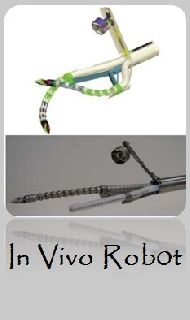Robotic surgery has emerged as a promising technology that can help to improve surgical outcomes and reduce the risks associated with traditional open surgery. Robotic surgical devices have been in use for several years, and they have proven to be effective in a wide range of surgical procedures. However, the current generation of robotic surgical devices has some limitations, including a lack of mobility and flexibility. A new generation of in vivo robotic surgical devices is currently being developed that promises to overcome these limitations and offer a new level of precision and control in surgical procedures. This essay will explore the features and benefits of the new generation of in vivo robotic surgical devices.
Features of the New Generation In Vivo Robotic Surgical Device
The new generation of in vivo robotic surgical devices has several key features that set it apart from the current generation of devices. These features include:
-
Miniature Size - The new generation of in vivo robotic surgical devices is much smaller than current devices, allowing them to be inserted into the body through small incisions. This means that surgical procedures can be performed with less trauma to the body and faster recovery times for patients.
-
Increased Mobility - The new generation of in vivo robotic surgical devices has a greater range of motion than current devices, allowing them to navigate through the body with greater precision and control. This increased mobility makes it easier for surgeons to access hard-to-reach areas of the body and perform complex surgical procedures.
-
Advanced Imaging - The new generation of in vivo robotic surgical devices is equipped with advanced imaging technology, such as real-time ultrasound and 3D imaging, that allows surgeons to visualize the surgical site with greater clarity and accuracy. This improves surgical outcomes and reduces the risk of complications.
-
Wireless Control - The new generation of in vivo robotic surgical devices is wirelessly controlled, allowing surgeons to manipulate the device from outside the body. This reduces the risk of infection and makes the surgical procedure safer for patients.
Benefits of the New Generation In Vivo Robotic Surgical Device
The new generation of in vivo robotic surgical devices offers several key benefits over the current generation of devices. These benefits include:
-
Improved Precision - The increased mobility and advanced imaging technology of the new generation of in vivo robotic surgical devices allow for greater precision in surgical procedures. This improves surgical outcomes and reduces the risk of complications.
-
Reduced Trauma - The miniature size of the new generation of in vivo robotic surgical devices means that surgical procedures can be performed with less trauma to the body. This reduces pain, scarring, and recovery time for patients.
-
Faster Recovery - The reduced trauma and increased precision of the new generation of in vivo robotic surgical devices allow for faster recovery times for patients. This means that patients can return to their normal activities more quickly after surgery.
-
Safer Surgery - The wireless control of the new generation of in vivo robotic surgical devices reduces the risk of infection and makes surgical procedures safer for patients.
-
Increased Access - The increased mobility of the new generation of in vivo robotic surgical devices allows surgeons to access hard-to-reach areas of the body more easily. This opens up new possibilities for surgical procedures and allows for more complex surgeries to be performed.
Future Applications of the New Generation In Vivo Robotic Surgical Device
The new generation of in vivo robotic surgical devices has the potential to revolutionize the field of surgery and open up new possibilities for surgical procedures. Some of the future applications of this technology include:
-
Microsurgery - The miniature size of the new generation of in vivo robotic surgical devices makes them ideal for performing microsurgery, such as nerve repair or small vessel anastomosis.
-
Endoscopic Surgery - The increased mobility of the new generation of in vivo robotic surgical devices makes them ideal for performing endoscopic surgery, such as colonoscopies or bronchoscopies.
3. Cardiovascular Surgery - The advanced imaging technology and increased mobility of the new generation of in vivo robotic surgical devices make them ideal for performing complex cardiovascular surgeries, such as heart valve repair or coronary artery bypass.
Neurosurgery - The increased precision and mobility of the new generation of in vivo robotic surgical devices make them ideal for performing neurosurgery, such as deep brain stimulation or tumor removal.
Gynecological Surgery - The miniature size and increased mobility of the new generation of in vivo robotic surgical devices make them ideal for performing gynecological surgery, such as hysterectomies or ovarian cyst removal.
Conclusion
The new generation of in vivo robotic surgical devices represents a significant advancement in the field of surgery. The miniature size, increased mobility, advanced imaging, and wireless control of these devices offer several key benefits over the current generation of devices, including improved precision, reduced trauma, faster recovery, safer surgery, and increased access. The future applications of this technology are vast and include microsurgery, endoscopic surgery, cardiovascular surgery, neurosurgery, and gynecological surgery. The development of this technology represents a significant step forward in the field of surgery, and it has the potential to improve surgical outcomes and reduce the risks associated with traditional open surgery. However, it is important to recognize that the use of in vivo robotic surgical devices still requires skilled and experienced surgeons to operate them safely and effectively. The development of this technology should be accompanied by appropriate training and regulation to ensure patient safety and the highest standards of care.






